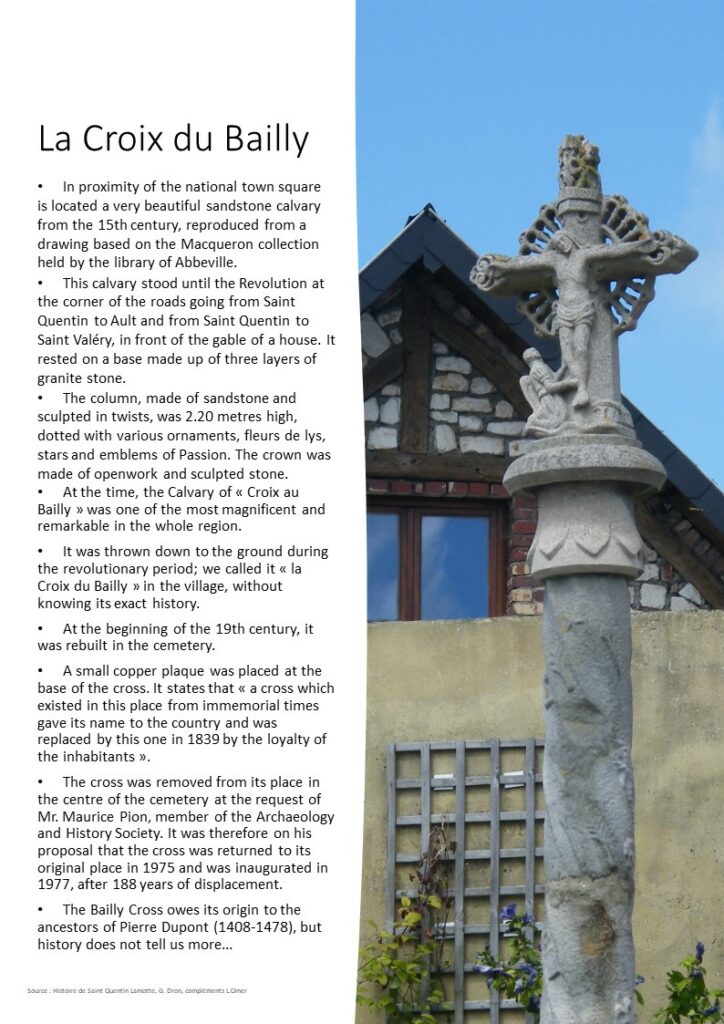
In proximity of the national town square is located a very beautiful sandstone calvary from the 15th century, reproduced from a drawing based on the Macqueron collection held by the library of Abbeville.
This calvary stood until the Revolution at the corner of the roads going from Saint Quentin to Ault and from Saint Quentin to Saint Valéry, in front of the gable of a house. It rested on a base made up of three layers of granite stone.
The column, made of sandstone and sculpted in twists, was 2.20 metres high, dotted with various ornaments, fleurs de lys, stars and emblems of Passion. The crown was made of openwork and sculpted stone.
At the time, the Calvary of « Croix au Bailly » was one of the most magnificent and remarkable in the whole region.
It was thrown down to the ground during the revolutionary period; we called it « la Croix du Bailly » in the village, without knowing its exact history.
At the beginning of the 19th century, it was rebuilt in the cemetery.
A small copper plaque was placed at the base of the cross. It states that « a cross which existed in this place from immemorial times gave its name to the country and was replaced by this one in 1839 by the loyalty of the inhabitants ».
The cross was removed from its place in the centre of the cemetery at the request of Mr. Maurice Pion, member of the Archaeology and History Society. It was therefore on his proposal that the cross was returned to its original place in 1975 and was inaugurated in 1977, after 188 years of displacement.
The Bailly Cross owes its origin to the ancestors of Pierre Dupont (1408-1478), but history does not tell us more…